The first computer mouse in what year. Who invented the computer mouse
Computer mouse: basic information
Such a computer component as a mouse is known to everyone these days. None desktop computer It is impossible to work normally without using a mouse. It feels like she just was and that’s it. But this feeling is wrong, since any objects and things are invented by someone.
Who is the inventor of the computer mouse?
There are various rumors about the invention of the mouse. According to some information, it was created in the Xerox laboratory; other legends say that an order from Apple Corporation was responsible for the “mouse’s” birthday.
Neither one nor the other is fundamentally wrong. The inventor of the computer mouse is Douglas Engelbart. His innovation was demonstrated among others at an IT conference in San Francisco. This happened in the winter of 1968.
In the mentioned year, a ready-made accessory was released. In what year was it invented? computer mouse?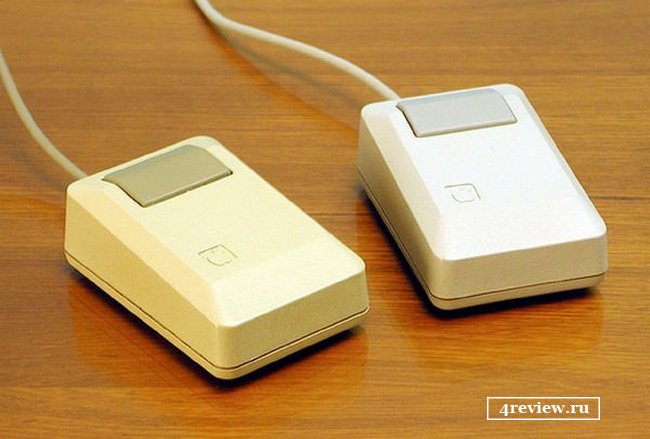
Douglas had his first thoughts about creating such a device back in 1951. The idea itself and its technical implementation occurred in 1963 and 1964.
At that time, Engelbart was working on his oN-Line System (NLS) operating system. Working on it software led to the concept of the “window” interface. Making the mouse was a side hustle. This accessory was positioned as one of the possible manipulators for working with windows. The idea for the mouse appeared a year before its invention, and in 1964 the first working prototype of this device was released. 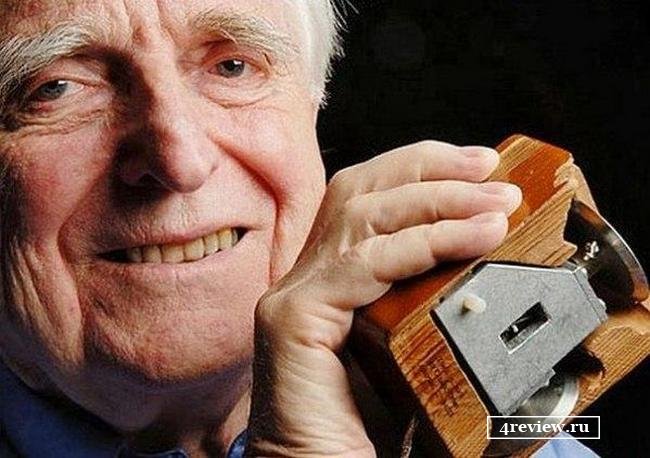
Why did the mouse become a mouse? Nobody knows this, and even Engelbart himself admits that he does not have an answer to this question. According to him, this name for the accessory immediately took root, and subsequently never changed.
What did the first such device look like? Imagine a small wooden box. Inside it there are two wheels located perpendicular to each other, as well as a button located on the outside of the mouse. Moving the mouse on the table causes the wheels to roll. By performing this simple action, it was possible to find out the direction of movement of the device, as well as the amount by which the device was moved. This data was then converted into cursor movement on the monitor screen.
A mouse at that time was a very expensive pleasure. The Mouse House company produced similar devices that were priced at $400. Another $300 had to be paid for the interface board to which the mouse was connected. Such a high cost was due to the rather complex and not very reliable mechanical device mice. In short, the mouse became officially recognized, but in fact remained available only to developers of new computer technology. Ordinary users have so far stayed away from it due to the very high cost and, as a result, the inaccessibility of this device to them. 
15 years after the invention of the mouse, Apple was developing the Macintosh. The company decided to equip these computers with newly invented accessories. The head of the corporation ordered the creation of a mouse, the cost of which was $25. The “Apple” device was significantly improved: firstly, it was decided to abandon the mechanical suspension - now a large rubber ball rolled freely in the body. The wheels were replaced by slotted wheels, and the electrical contacts were replaced by optics. Having abandoned manual assembly, it was decided to use plastic case, each detail in which was fastened in its place. Thus, human labor was significantly abolished - now any worker could assemble a mouse on an assembly line.
The device invented by Engelbart and the development of the Macintosh influenced each other positively. The mouse became popular thanks to Apple, and the Macintoshes themselves - due to the fact that the corporation made a bold decision (and, subsequently, implemented) to equip computers with a mouse.
In August 1995, Microsoft's second graphical operating system, Windows 95, launched. Engelbart's invention played a significant role in the success of the operating system and contributed significantly to its success.
After the demonstration of the device, so popular these days, was successful, Douglas received a check for his invention in the amount of $10,000. At the beginning of the 21st century, Engelbart was awarded the National Medal of Technology for his inventions. This is considered in the United States the highest award for scientists for their IT achievements.
Douglas could now have countless treasures and be significantly richer than Bill Gates. It was not the American modesty of the one who invented the mouse that influenced the fact that he deliberately went into the shadows. Nowadays, few people know that it was Douglas Engelbart who in 1964 invented what the whole world has been using for more than half a century.
Exactly 40 years ago, on December 9, 1968, at a computer conference in San Francisco, among other innovations, Douglas Engelbart demonstrated the first mouse. Some computer legends say that the computer mouse was created in the Xerox laboratory, others that the mouse was created by order of Apple. In fact, a computer mouse, also known as an x and y position indicator, also known as computer manipulator, aka a mouse-type manipulator, was “born” in 1964. It was invented by Douglas Carl Engelbart (born January 30, 1925) from the Stanford Research Institute.

There was no “state order” for the mouse - it appeared as one of by-products when Engelbart developed the oN-Line System (NLS) operating system. During the work on NLS, the concept of a “windowed” interface emerged, and the mouse was created as one of the possible manipulators for working with windows. In fact, the idea of such a manipulator appeared in 1963, and in 1964 the first working prototype was made (in one interview, Engelbart said that his first thoughts about creating such a device appeared in 1951).
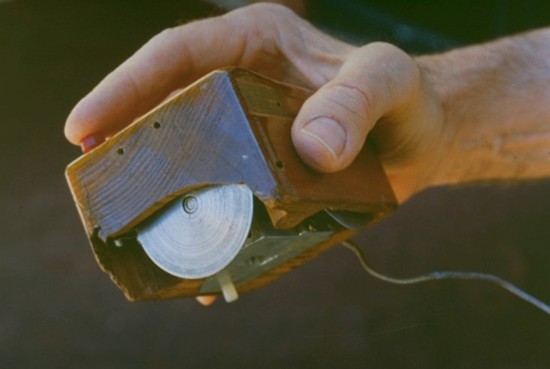
The first computer mouse was a wooden box self made, inside which there were two perpendicular wheels and a button. When the mouse moved, the wheels rolled on the table and made it possible to find out the direction and amount of movement of the device. This data was converted into cursor movement on the screen.
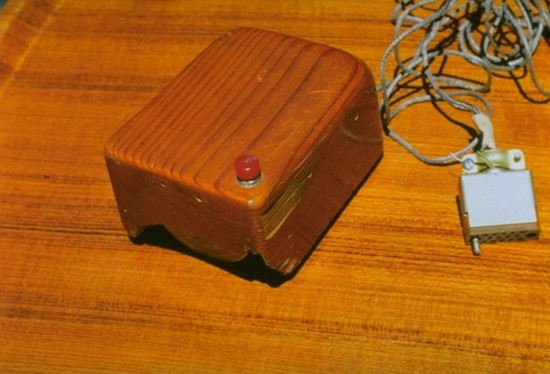
On December 9, 1968, the first public demonstration of the NLS system and, with it, a prototype mouse took place. And in 1970, Engelbart received a patent for an “x and y coordinate indicator for a display system.”
Engelbart did not work alone on the creation of the manipulator: he “only” invented the mouse, and his idea was brought to life by graduate student Bill English (Bill English; there are many “Bill English” in the world, but the trace of this is lost, his biographical information is scant and fragmentary. With One of the few photographs of Bill English can be found on the “mouse site” of the Stanford virtual museum). Later, Jeff Rulifson, now head of the VLSI Research Group at Sun Microsystems Laboratories, significantly improved the design of the mouse and developed software for it.
The archives of the Stanford University Virtual Museum contain a 1968 educational film that demonstrates the first computer mouse and its amazing capabilities for that time. The next “mouse step” was made in 1972 at the Xerox PARC research center in Palo Alto. An improved version of the Xerox mouse was created by Bill English, who moved to PARC from Engelbart's laboratory: two large wheels were replaced by a single bearing, the movements of which were fixed using two rollers inside the mouse. The design of the case has become more reminiscent of a modern mouse.
Until the beginning of the 80s of the XX century. the mouse was still an exotic device. In 1983, there were about 10 companies producing and selling various models computer mice. Some of these companies were founded by former employees of the Engelbart Laboratory, or PARC.
By the way, a mouse in those days was not cheap. For example, The Mouse House's mice, based on Xerox designs and patents, cost about $400 (plus about $300 for the interface board to which the mouse was connected). This was explained by the fact that the mouse had a rather complex (and not very reliable) mechanical device.
In short, the mouse, although it has become "officially recognized" peripheral device, but still remained the lot of researchers and developers of new computer technologies, but by no means ordinary users.
In 1979, Apple was developing the Macintosh and Lisa PCs. It was decided to equip them with mice, and Steve Jobs I ordered the creation of a mouse - unpretentious, reliable, with a cost of about $20-30 - from the design company Hovey-Kelley Design. As a result, the mouse was significantly modified: instead of a small steel bearing in a complex mechanical suspension, a large rubber ball appeared that rolled freely in the body. Wheel system and unreliable electrical contacts was replaced by optoelectronic converters and wheels with slotted slots. In addition, it was decided to use a molded plastic case, in which all the necessary parts were clearly fastened in place. Thus, it was possible to abandon precision machining of the case and manual assembly - now the mouse could be assembled by any worker on the assembly line.
We can say that the computer mouse gained popularity thanks to Apple computers Macintosh - and she, in turn, became one of the reasons for the stunning success of the Macintosh PC in 1984
The successful launch of Windows 95 in August 1995 was also greatly facilitated by Engelbart's mouse.
By the way, Microsoft introduced mouse support in the IBM PC back in 1983, but later (Billy, as always, is a little late, but catches on in time...) than Apple, drew attention to the capabilities of the mouse when working with “windowed” systems.
There are also computer legends about the name of the mouse - that it was proposed to call it, for example, “beetle”. These are legends and nothing more: in all interviews - when asked about the name - Engelbart invariably answered: “I don’t know why we called it a mouse. The name stuck right away and we never changed it.”
In 1968, Engelbart received a check for $10 thousand for his invention and made the entire fee as the first contribution for a modest country house... On December 1, 2000, Engelbart was awarded the National Medal of Technology for all his inventions, including the invention of the computer mouse. Medal of Technology) is one of the highest US awards for scientists for achievements in the IT field.
Now Douglas Engelbart could be richer and more famous than Bill Gates, but, unlike the latter, he is not modest in an American way: he deliberately “went into the shadows”, and few people remember him.
Of course, you can’t say about the inventor of the computer mouse that he is as poor as a church mouse, but he didn’t earn millions/billions from his invention either...
according to information from open sources
There are some objects without which it is literally like being without hands. This device is one of them: a rare computer user can do without it. This refers to a mouse manipulator (this is its official name), the purpose of which is to convert the user’s mechanical movements into the movements of a pointer-cursor on the screen. Of course, you can get by with just one keyboard or touch devices touchscreen and touchpad, and yet working at a computer without a mouse can be easily compared to riding a bicycle without pedals.
Why the mouse was called a mouse, there are two versions. Some believe that this name was given to it by the inventor of the American engineer Douglas Engelbart, since its wire looked like a tail (another name “beetle”, associated with the shape of the body, did not catch on). Others are sure that the English “mouse” is an abbreviation for Manually Operated User Signal Encoder (“manually operated user signal encoder”). Engelbart himself mentioned in an interview that the idea for such a device came to him in the early 1950s, while studying at the University of Berkeley and working in a radar laboratory belonging to NACA (the future NASA).
However, this idea was realized only in 1964, when Engelbart, while creating the oN-Line System (NLS) computer operating system, considered the concept of a window interface. A convenient manipulator was needed to indicate objects on the screen when interactive work with texts. Engelbart and his colleagues tabulated the characteristics of all manipulators known at the beginning of the 1960s, including leg, knee, etc.
Angelbart's mouse.
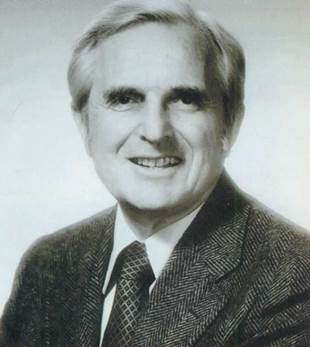
D. Engelbart.
None of the existing ones met the scientists' requirements, and then a rather awkward structure was born - a thick-walled wooden box with a tiny red button, an awkward "tail" under the user's wrist and large metal disks that turned when the device was moved. The first mouse was assembled by engineer Bill English, and programs to demonstrate its capabilities were written by Jeff Rulifson.
NASA did not appreciate either operating system, nor the manipulator that came with it. They were considered unnecessarily complex, and besides, Angelbart never knew how to present his developments from a favorable perspective, believing that competent people would figure it out anyway. In 1968, he did receive a patent for an “x and y coordinate indicator for a display system.” This model was significantly different from the experimental sample; it already had three buttons, but it was still very far from a modern mouse.
After the failure with the NLS system, Engelbart's laboratory was closed. English moved to the Xerox PARC research center, where many of modern computer technologies were born, and continued to improve the mouse. In 1972 he received a patent for new model. Two large disk English replaced it with one bearing, the movements of which were recorded using two rollers. The body design has also become more similar to what we are used to.
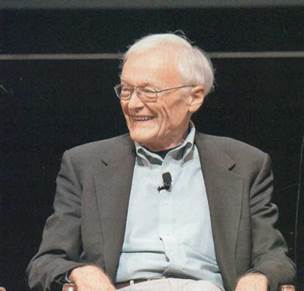
B. English.
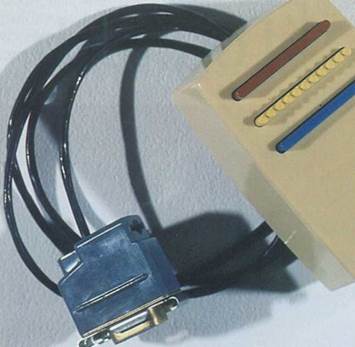
Three-button mouse. 1970s
The further fate of the mouse is closely connected with by Apple. Its executive director, Steve Jobe, commissioned the development of a new model from the small company Hovey-Kelley Design. The task was not easy: it was necessary to reduce the cost of the product by at least ten times, make the mouse more reliable and easier to use. As a result, the steel bearing in the complex mechanical suspension was replaced rubber ball, freely rolling in the body. The expensive system of coding disks and unreliable electrical contacts was replaced by simple optoelectronic converters and slotted wheels. In addition, a molded plastic case was proposed, in which all the parts were fastened in place. Such a mouse was simply assembled on an assembly line. As a result, Apple received a reliable and inexpensive device, which became one of the reasons for the stunning success of the Macintosh computers, which entered the market in 1984.
The mouse, created by order of Jobs, turned out to be so successful that its use continued for almost two decades. Only in the second half of the 1990s, a new type of optical mouse was created at the Agilent Technologies research laboratory, which at that time belonged to Hewlett-Packard.
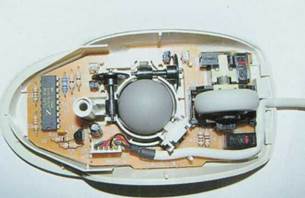
Mouse with ball drive.
The first generation of optical mice was based on the use various schemes optocoupler sensors with indirect optical communication. All these sensors had a common drawback: the working surface (mat) had to have a special hatching of lines intersecting at a certain angle. For some models, shading was done with paints invisible in normal light. Inconveniences in operation were obvious: the mouse had to be held in a strict orientation relative to the mat, and the mats themselves quickly became dirty and became unusable. Replacing them was not easy: the hatching pattern various manufacturers did not match, and the mouse pads were not produced separately from the mice. Due to this, the model never received wide distribution.
Production began in 1999 optical mice second generation based on a microcircuit containing a photosensor and an image processor. Reduction in cost and miniaturization computer equipment allowed us to fit it all into one element. The photosensor periodically scanned the area of the working surface under the mouse. When the pattern changed, the processor determined in which direction and at what distance the mouse had moved. The scanned area was illuminated by an LED (usually red).
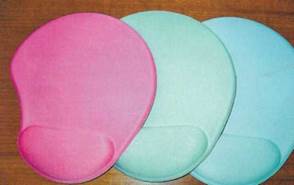
Mouse mats provide a huge scope for designers’ imagination: different shapes, colors, drawings...
In 2004, Logitech introduced the MX 1000 mouse, which uses an infrared laser to illuminate the surface rather than an LED. The advantage of this technology is the high contrast of the surface image obtained on the sensor, which ensures better recognition. The downside is the need to disperse the laser beam in order to increase the captured surface area. This is achieved by installing additional lenses, and as a result, the cost increases.
IN Lately Many new models of manipulators have appeared on the market, including wireless mice, using in great demand. Communication between the mouse and the connected to computer port the receiving device can be carried out in two ways. Contact using infrared radiation has a significant drawback: any obstacle between the mouse and the sensor interferes with work.
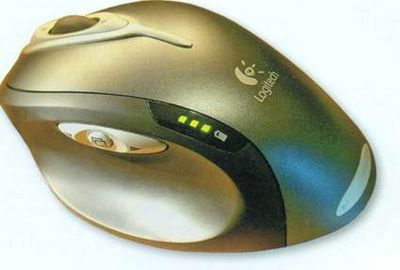
Logitech wireless mouse.
More convenient is radio communication using a Bluetooth connection, which allows you to abandon the need for a receiving device because most modern computers equipped with Bluetooth adapters.
Induction manipulators became a kind of offshoot from the first generation of optical mice. They come complete with a special mat, which, powered by the computer, creates a small electromagnetic field that induces an induction current in the manipulator coil. A special processor can track the movement of the manipulator in this magnetic field, transmitting a signal back to the computer. Such designs, however, are quite expensive, and hybrid mice are more often used, in which a conventional optical system is powered by induction current.
The functionality of mice of different modifications can vary significantly. Engelbart once planned to equip the mouse with five buttons for all fingers, but for a long time mice were either three-button or one-button, like Apple's. At the same time, the middle button was used very rarely and was eventually replaced by a scroll wheel (scrolling text). However, some manufacturers equip their mice with additional wheels and buttons. The design can include mini-joysticks and trackballs with rotating balls that provide scrolling in any direction.
In 2009, Apple introduced the Magic Mouse, the world's first mouse with touch control and support for multi-touch technology. Instead of controls, it uses touch touchpad, allowing using various gestures perform clicks, scrolling in any direction, various transitions and other actions. There are also gyroscopic mice that recognize movement not only on the surface, but also in space, and mice that can be used as a remote control remote control(eg MediaPlay from Logitech).
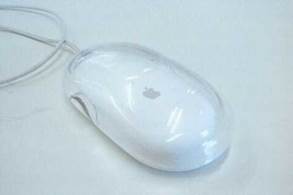
Apple mouse, Pro Mouse model.
Standard office mice have extravagant cousins designed for hobbyists. computer games. These more responsive devices feature additional customizable buttons and a non-slip exterior. And Logitech made an attempt to introduce interactive mice of the iFeel line, which notified the owner about various events on the screen with a slight vibration, but the new product did not inspire users.
Not just mice
Designing unusual mice has turned into a kind of competition for designers. So, the designers from South Korea have developed an inflatable JellyClick mouse, the electronic filling of which fits on a small flexible plate. When deflated, the mouse can be folded to the size of this plate, and the wire with the USB connector can be passed through a special holder. And the round gel Jelfin mouse can be used as a stress ball, crushed and pressed, relieving stress from hard work.
One of the most unusual mouse models is the NoHands Mouse from Hunter Digital, controlled... by your feet. The device consists of two pedals, one of which controls the movement of the pointer across the screen, and the second controls the pressing of the button. The developer claims that his device is not only more comfortable than conventional mouse models, but also allows you to get rid of carpal tunnel syndrome, which 70% of people who spend a lot of time at the computer have. It is also noted that when using NoHands Mous, both hands are free to work on the keyboard.
At one time it seemed that the progressive touch interface would take away the mouse's status as the primary coordinating input device. However, it turned out that during long-term work it becomes more tiring, since the arms have to be held suspended. That's why the mouse isn't going away, even though it's been blamed for causing painful carpal tunnel syndrome. After all, new ergonomic models and rational operating modes allow you to use the mouse with greater productivity and comfort.
11.10.2017







